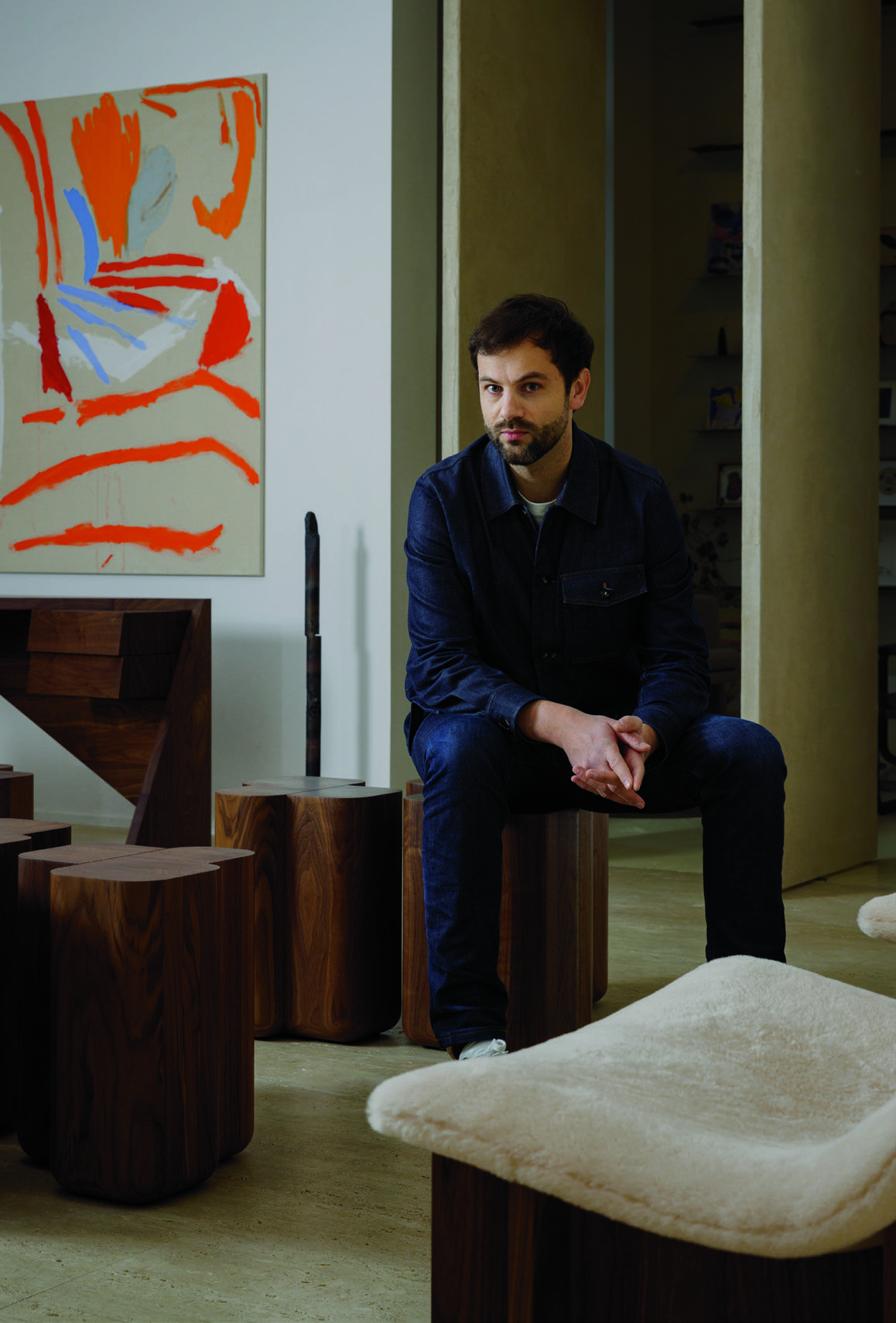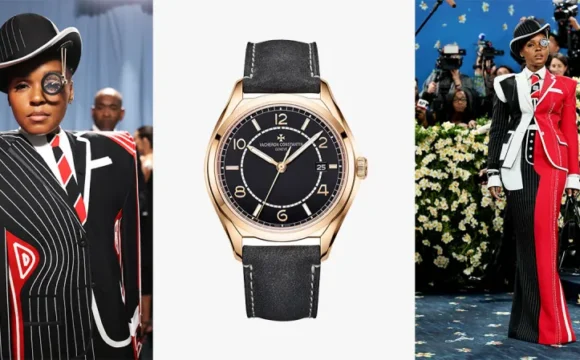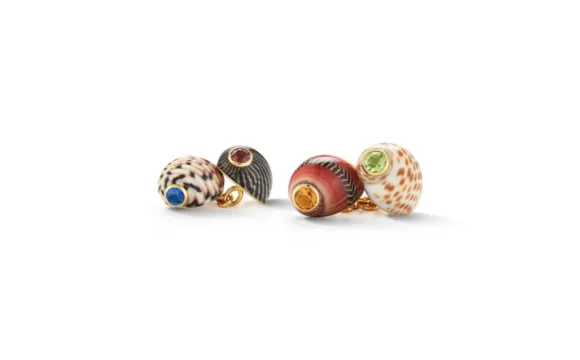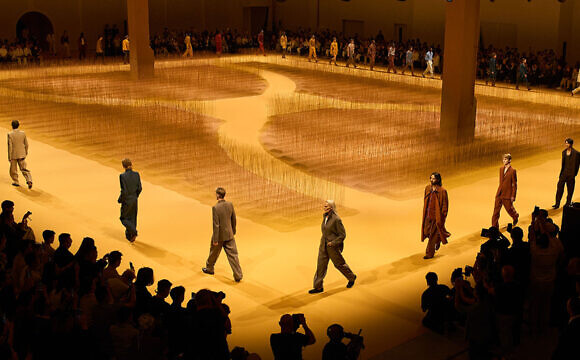วัยเด็กในเขตนอร์มันดี Guerrée ก้มหน้าก้มตาใช้สมาธิอยู่กับหนังสือและการนั่งวาดภาพหลายชั่วโมงทุกสัปดาห์ แต่เส้นทางของเขายังไม่ชัดเจน จนกระทั่งเขาอายุ 15 ปีและเข้าเรียนที่โรงเรียนมัธยมศึกษาที่ Lycée Pierre Simon de Laplace ซึ่งเป็นโรงเรียนมัธยมปลายเพียงแห่งเดียวในภูมิภาคที่มีหลักสูตรด้านการออกแบบ นั่นเองที่เส้นทางแห่งความฝันของเขาเริ่มเบิกบาน
“ผมหลงใหลในผลิตภัณฑ์และเฟอร์นิเจอร์เพราะผมสนใจในชีวิตประจำวัน" เขากล่าว “ผมไม่ค่อยถนัดกับการออกแบบภายใน [ทั้งห้อง] ผมชอบสเกลที่พอดีกับร่างกายมากกว่า"
ต่อมา Guerrée ย้ายไปปารีสเพื่อศึกษาออกแบบผลิตภัณฑ์ที่ École Boulle ซึ่งเป็นวิทยาลัยศิลปินชั้นนำที่ขึ้นชื่อด้านการสอนหัตถกรรมดั้งเดิม เช่น การปิดผิว และ งานไม้ (บุคลากรผู้จบการศึกษาที่มีชื่อเสียงด้านเฟอร์นิเจอร์ยุคกลางศตวรรษที่ 20 ได้แก่ Étienne Fermigier, Olivier Mourgue และ Jacques Hitier) “ผมเรียนรู้เกี่ยวกับการออกแบบมากมายในช่วงเวลาที่อยู่นั่น" Guerrée กล่าว “แต่การฝึกงานด้านการทำตู้ (cabinetmaking) มีความสำคัญมากในการสร้างสรรค์ผลงานของผม กระบวนการสร้างสรรค์งานฝีมือเหล่านั้นไม่ต่างจากวิธีที่ผมผลิตชิ้นงานต่างๆ ในปัจจุบัน" โปรแกรมหนึ่งพาเขาไปญี่ปุ่น ซึ่งเขาได้มีโอกาสเข้าร่วมเวิร์คช็อปกับปรมาจารย์เป่าแก้วในโตเกียว “ตอนนั้นผมพูดภาษาอังกฤษไม่ได้เลย พวกเราจึงแค่ส่งสเก็ตช์ไปมาและทำงานด้วยวิธีนั้น" เขากล่าว “ผ่านประสบการณ์ครั้งนั้น ผมได้ค้นพบว่าการออกแบบ หรือการสร้างสรรค์โดยทั่วไป คือ ภาษาที่คุณใช้ในการแสดงออก"
ในปี 2010 Guerrée เริ่มต้นทำงานกับ Andrée Putman และ Christophe Delcourt นักออกแบบเฟอร์นิเจอร์ชื่อดังชาวฝรั่งเศส “หลังจากเรียนจบ ผมยังไม่พร้อมที่จะเปิดสตูดิโอของตัวเอง" Guerrée ยอมรับ “มันเร็วเกินไป และในแง่เทคนิค ผมยังไม่เจอแนวทางการออกแบบที่เป็นตัวของตัวเอง"
แต่หลังจากคลุกคลีในวงการออกแบบเกือบทศวรรษ Guerrée ก็ได้เปิดสตูดิโอของตัวเองในปี 2020 และเปิดตัวผลงานเดี่ยวครั้งแรกในเดือนกุมภาพันธ์ 2021 คอลเลกชัน “เก้าอี้แห่งกาลเวลาที่สูญหาย" (Chairs of Lost Time) ได้รับแรงบันดาลใจจากนวนิยาย “สรรพสิ่งที่สูญหายไปรำลึกไม่ได้" (In Search of Lost Time) ของ Proust ชิ้นงานแต่ละชิ้นสะท้อนถึงตัวละครจากหนังสือ ผลงานที่ประสบความสำเร็จอย่างมากในแง่ของบทวิจารณ์ ยกให้ Guerrée เป็นดาวรุ่งพุ่งแรงในวงการออกแบบ
เช่นเดียวกับเสื้อผ้าโอต์กูตูร์ ผลงานสั่งทำพิเศษของเขานำเสนอจินตนาการและการหลีกหนีจากความจำเจ ด้วยรูปทรงที่ประดิษฐ์อย่างพิถีพิถัน ท้าทายกระแสความนิยมของสไตล์ minimalism ในงาน Paris Design Week ปี 2022 เขาได้นำเสนอคอลเลกชัน Fragments ซึ่งเป็นเฟอร์นิเจอร์และของตกแต่งจากหินอ่อนที่ได้รับแรงบันดาลใจจากผลงานของ Le Corbusier และสถาปัตยกรรมกรีกโบราณ โปรเจคท์ความร่วมมือกับแบรนด์ M Éditions นี้ จัดแสดงที่ Maison La Roche บ้านในปารีสที่ Le Corbusier ออกแบบร่วมกับ Pierre Jeanneret ลูกพี่ลูกน้องและผู้ร่วมงาน
แต่ Guerrée ไม่ได้ออกแบบภายใต้ชื่อของตัวเองเพียงอย่างเดียว เขายังเคยร่วมงานกับแบรนด์ที่หลากหลาย ไม่ว่าจะเป็นแบรนด์ De La Espada จากโปรตุเกส Habitat จากอังกฤษ เป็นต้น สำหรับงาน Milan Design Week เขาจะนำเสนอคอลเลกชันใหม่สองคอลเลกชัน หนึ่งร่วมกับบริษัท Linteloo จากเนเธอร์แลนด์ (เป็นการร่วมมือครั้งที่สี่) และอีกคอลเลกชันกับ Atelier de Troupe พาร์ทเนอร์ใหม่จากนิวยอร์ก “ผมชอบทำงานกับคนอื่น ๆ แบรนด์อื่น ๆ " Guerrée กล่าว “ทุกครั้งที่ทำงานกับคนอื่น ฝีมือของผมก็พัฒนาขึ้น ผมยิ่งมีความเชี่ยวชาญด้านเทคนิคมากเท่าไหร่ ผมก็ยิ่งมีความอิสระในการแสดงออกผ่านผลงานมากเท่านั้น"
จากบทความโดน Rachel Gallaher และ Antonina Jedrzejczak
Anthony Guerrée knew he wanted to pursue a creative career from an early age. As a child in Normandy, he spent hours every week with his nose in a book or sketching still-life scenes. But it wasn’t until he turned 15 and enrolled at Lycée Pierre Simon de Laplace, the region’s only high school with a design curriculum, that his path started to unfurl.
“I found myself drawn to products and furniture because I am interested in the rituals of everyday life," he says. “I’m not comfortable with [full-room] interior design; I prefer the scale of the body."
Guerrée later moved to Paris to study product design at École Boulle, a fine arts college renowned for teaching traditional crafts such as marquetry and woodworking. (Midcentury-furniture greats Étienne Fermigier, Olivier Mourgue, and Jacques Hitier are all noted graduates.) “I learned so much about design during my time there," Guerrée says, “but the residency in cabinetmaking was very important in forming my practice. That handcrafted creation process is not far off from how I produce my pieces today." One program took him to Japan, where he had the opportunity to join a workshop with a master glassblower in Tokyo. “I didn’t speak any English at the time, so we just passed sketches back and forth and worked that way," he says. “Through that experience, I discovered that design, or creation in general, is a language you can use to express yourself."
In 2010, Guerrée went to work for noted French furniture designers Andrée Putman and Christophe Delcourt. “After graduating, I wasn’t ready to start my own [studio]," Guerrée admits. “It was too early, and I wasn’t at the point, on a technical level, where I had found a voice."
But after nearly a decade in the industry, Guer-rée started his own studio in 2020 and presented his solo debut in February 2021. The collection, Chairs of Lost Time, was inspired by Proust’s novel In Search of Lost Time. Each piece reflects a character from the book. The work’s critical success positioned Guerrée as a rising star.
Much like haute couture, his bespoke pieces offer fantasy and escape, their intricately crafted forms rebelling against the cult of minimalism. At Paris Design Week in 2022, he presented Fragments, a range of marble objects and furniture that take inspiration from the work of Le Corbusier and classical Greek architecture. The joint project, with M Éditions, was installed at Maison La Roche—the Paris home Le Corbusier designed with his cousin and collaborator, Pierre Jeanneret.
But Guerrée doesn’t design under only his name. He has collaborated with brands as varied as the Portuguese company De La Espada and Britain’s Habitat, among others. For Milan Design Week, he will present two new collections, one with the Dutch firm Linteloo (their fourth partnership) and one with a new partner, New York’s Atelier de Troupe. “I love to work with other people, other brands," Guerrée says. “I evolve my craft every time I work with someone else. The more technically advanced you get, the freer you are to express yourself through your work."
From the article by Rachel Gallaher and Antonina Jedrzejczak








